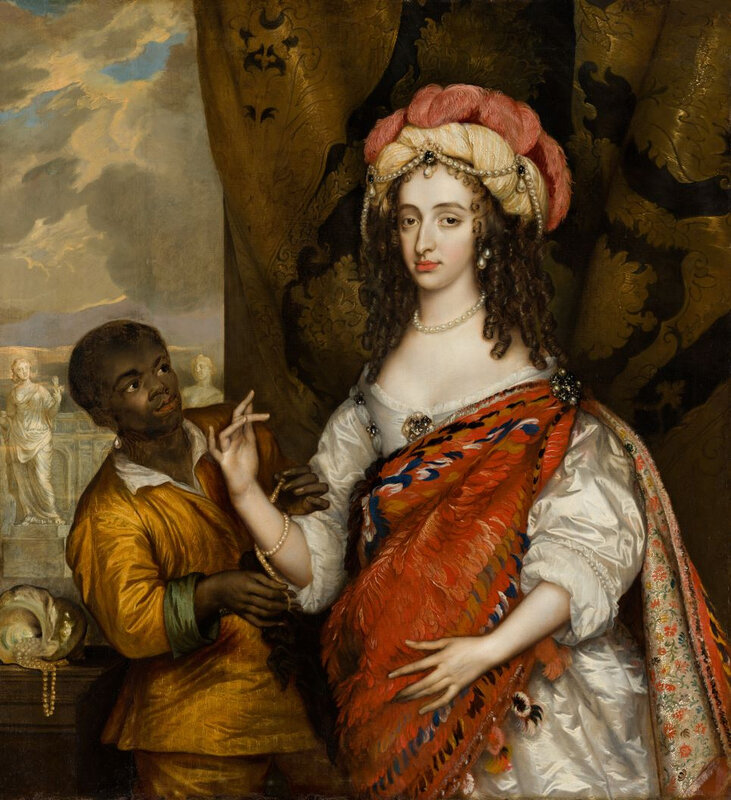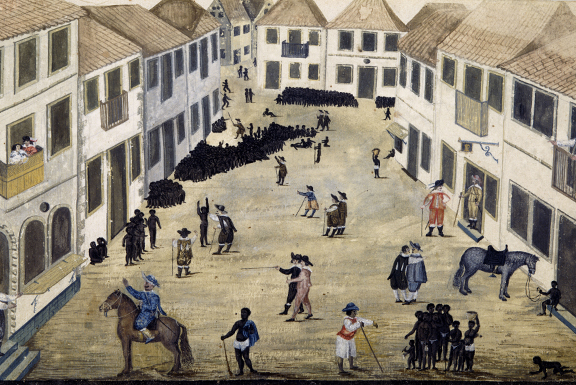New room presents works related to the man who built the Mauritshuis
Jan de Baen, Portrait of Johan Maurits (1604-1679), Count of Nassau-Siegen, Founder of the Mauritshuis, c. 1668 - 1670. © 2020 Mauritshuis
THE HAGUE.- From today, the Mauritshuis in The Hague presents a new permanent display in one of the rooms of the museum. The room contains works related to Johan Maurits, Count of Nassau-Siegen and the man who built the Mauritshuis in the 17th century. The Mauritshuis previously considered Johan Maurits primarily from an art historical perspective; this new display also tells the story of his role as governor of the colony Dutch Brazil and in the transatlantic slave trade. In addition to the new museum room, attention will also focus on the research from the recently-launched project ‘Revisiting Dutch Brazil and Johan Maurits’. In a recent article written by two Mauritshuis researchers, new facts about Johan Maurits and his role in the slave trade were revealed. As well as these findings, the museum today also announces the names of the four researchers who will examine different aspects of Dutch Brazil and Johan Maurits over the coming period.
Mrs Martine Gosselink, director of the Mauritshuis: ‘We are regularly asked whether the Mauritshuis is going to change its name given the role that Johan Maurits played in the transatlantic slave trade. This is not something we are going to do. He was simply the owner and person who gave the Mauritshuis its name. This house doesn’t bear his name because he was considered a great hero, but because it has always been named after (Johan) Maurits. What we are going to do is to make Johan Maurits more visible in his former home to enter into the debate about slavery. We are doing this online with a series of online debates that we are organising, by facilitating research and with our own collection in a permanent room in the museum itself. Johan Maurits’s past raises questions for many, and we don’t intend to shy away from these’.
Jan van Logteren, Full-Length Portrait of Johan Maurits (1604-1679), Count of Nassau-Siegen, 1727. © 2020 Mauritshuis
The Mauritshuis and Johan Maurits
The new display in Room 8, on the first floor of the Mauritshuis, consists of eleven artworks related to Johan Maurits of Nassau-Siegen (1604-1679), Dutch Brazil and the history of the Mauritshuis as a building and museum. All the artworks in this new display – ten paintings and a sculpture – come from our own collection, but were previously dispersed throughout the building. By bringing these works together in one room, the visitor is given the opportunity at the start of their visit to the museum to form an image of the man who gave the museum its name and his background. New room texts and a reworked multimedia tour shed light on various aspects of Johan Maurits’s governorship (1636-1644) of Dutch Brazil in the service of the WIC (West-Indische Compagnie, the Dutch West India Company).
The present collection on show in the museum is not Johan Maurits's but was brought together in the 18th and 19th centuries by Stadtholder William V (1748-1806) and King William I (1772-1843).
Adriaen Hanneman, Posthumous Portrait of Mary I Stuart (1631- 1660) with a Servant, c. 1664. © 2020 Mauritshuis
Albert Eckhout, Study of Two Brazilian Tortoises, c. 1640. © 2020 Mauritshuis
Idealised image
Johan Maurits was long viewed above all as an ‘enlightened’ and tolerant governor who took artists and scientists with him to Brazil. Today attention is also given to his role in the transatlantic slave trade and the slavery system that keep the lucrative sugar mills running. Artworks from the time present an idealised image of the colony, which is why the accompanying texts focus on precisely that which is not visible. The exhibition Shifting Image – In Search of Johan Maurits (April – July 2019) previously explored the different aspects of the historical figure Johan Maurits. The new display in the museum provides a permanent focus for the story of Johan Maurits, Dutch Brazil and his relationship with the Mauritshuis.
Frans Post, Brazilian Landscape with a House under Construction, c. 1655 - 1660. © 2020 Mauritshuis
Frans Post, View of Itamaracá Island in Brazil, 1637. © 2020 Mauritshuis
Illegal slave trade
After the exhibition Shifting Image – In Search of Johan Maurits in 2019, the Mauritshuis initiated the research project Revisiting Dutch Brazil and Johan Maurits. This project focuses on historical (archival) research into Johan Maurits’s time as governor in Brazil, with an emphasis on subjects that before now have been given little attention. These include Johan Maurits’s role in the transatlantic slave trade between West and Central Africa and Brazil, a role that has previously been downplayed by various writers. In an article recently published in the journal Early American History, head of the research project Mr Erik Odegard and Mrs Carolina Monteiro (formerly junior researcher at the Mauritshuis) write that new research has established that Johan Maurits traded in people at his own expense. While the slave trade was not illegal in the eyes of the WIC, the private trade in enslaved people was. Johan Maurits smuggled enslaved Africans into Brazil and sold them on to others. He also traded a ‘gift’ of two hundred people from the king of Congo for personal gain.
Zacharias Wagner, Slave market in Recife , ca. 1637-1641, Image ANP/ AKG/ Kupferstichkabinett, Dresden.
Research project
The project Revisiting Dutch Brazil and Johan Maurits is a broad-based study of the colony Dutch Brazil and Johan Maurits. For this, a fellowship programme has been set up with the support of the Dutch 'Gieskes-Strijbis Fund', in which an international group of researchers will focus on four subjects:
1. ‘Tracing black lives in Brazil and the Dutch Atlantic’ 2. ‘Johan Maurits’s relations with the city of Salvador: war, diplomacy and cultural exchanges between Dutch Recife and Portuguese Bahia, c. 1637-1644' 3. 'Indigenous memories of the Portuguese-Dutch wars and the indigenous policies in the Portuguese Amazon’ 4. ‘The Dutch impact in fostering the trans-Atlantic links between Angola and Brazil based on slave trading activity’
Head of the research project Erik Odegaard is also working on an article about private investments from the Dutch Republic in Dutch Brazil (in sugar mills and plantations, for example). The research period runs from September 2020 until December 2021 and will culminate in various academic publications and a symposium. The fellows announced today are: Mr Mark Ponte, Mrs Irene Maria Vicente Martín, Mr André Luís Ferreira and Mr Miguel Geraldes Rodrigues.

/https%3A%2F%2Fprofilepics.canalblog.com%2Fprofilepics%2F1%2F0%2F100183.jpg)
/https%3A%2F%2Fstorage.canalblog.com%2F03%2F02%2F119589%2F96711876_o.jpg)
/https%3A%2F%2Fstorage.canalblog.com%2F11%2F31%2F119589%2F94773502_o.jpg)
/https%3A%2F%2Fstorage.canalblog.com%2F20%2F83%2F119589%2F94772815_o.jpg)
/https%3A%2F%2Fstorage.canalblog.com%2F26%2F72%2F119589%2F75604929_o.jpg)
/https%3A%2F%2Fstorage.canalblog.com%2F59%2F60%2F119589%2F26458628_o.jpg)









/http%3A%2F%2Fstorage.canalblog.com%2F46%2F22%2F119589%2F122366228_o.jpg)
/http%3A%2F%2Fstorage.canalblog.com%2F10%2F51%2F119589%2F121347711_o.jpg)
/http%3A%2F%2Fstorage.canalblog.com%2F86%2F33%2F119589%2F112419991_o.jpg)
/image%2F1371349%2F20240417%2Fob_9708e8_telechargement.jpg)